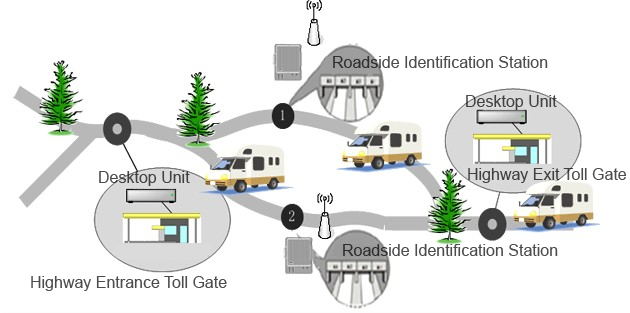System Outline
Currently, highway construction is expanding and networked fee charging process is accelerating. As road network size and traffic volume increase, users requirements for efficiency and service levels are also growing higher and higher. As road investors grow, road network structures are becoming more and more complex. After the scope of networked fee charging expands, conflicts among road investors regarding ambiguous paths are becoming more and more outstanding.
Conflicts regarding ambiguous paths mainly exist in toll charging and splitting. Currently, tolls are mainly charged by the shortest path. Splitting is divided into two types: precise splitting and ambiguous splitting. However, as ambiguous paths grow more and more, toll amounts are becoming bigger and bigger. If we continue to charge tolls by the shortest path and by ambiguous splitting, it will seriously damage the interests of investors and operation managers, affect their investment activity and highway construction progress. So, it is an unavoidable trend to precisely charge and split tolls.
In order to protect the interests of owners and solve the problems concerning ambiguous highway paths, path identification is transiting from probable identification to precise identification. Among precise identification technologies, RFID has bigger advantages and bigger development rooms than other technologies. It is the trend and direction of future path identification system developments.
KH Ambiguous Expressway Path Identification System grows stronger and stronger in this information and network wave and follows the toll system development trend. We are planning to build a complete path identification system for accounts splitting and use the precise RFID path identification technology. KH, in order to cooperate with highway ambiguous path construction, has developed the compound access card (OBU), road side identification station (RSU) and compound reader (ODU), and has launched a full line of products to support highway ambiguous path construction. System design fully considers compatibility with existing systems. The advancement, stability, safety, etc. of the system promotes the accurate information system construction for highway enterprises.

KH Ambiguous Expressway Path Identification System – Work Mode
System Characteristics
1 Dual wakening mechanism – system identification success rate high
The system adopts the dual awakening mechanism - entrance awakening and on-the-road awakening. This, while ensuring low-power consumption, improves identification success.
2 Strict safety mechanism ensures transaction reliability and safety
The system adopts a strict safety control mechanism which uses strict encryption and de-encryption algorithms to ensure transaction safety. In addition, under the existing design framework, compound access cards can realize soft encryption module in software and increase data verification operations in the data interaction process.
3 Status monitoring facilitates remote maintenance and management
The system provides telecommunication-level webmaster function. The roadside identification station has good network support functionality, so network management tools may be used to perform network configuration and networking operations. The network configuration software or local command debugging tool on the server enables configuration management, remote management, PSMA management, operations diagnosis and alert management for all roadside identification stations in the network and support remote upgrading of equipment.
4 Applicable to a wide range of temperatures and complex application environments
The devices are industrial elements that are able to maintain high sensitivity and high reliability within the temperature range of - 20℃ to 65℃.
5 7ⅹ24 operation
The devices adopted for the projects have passed global technical index certifications in terms of reliability and stability, passed EMC test, environmental adaptability test, national-level vibration experiment, national CE certification, etc. The system uses an embedded operating platform that provides higher stability and safety, thus ensuring 7ⅹ24 operation.
